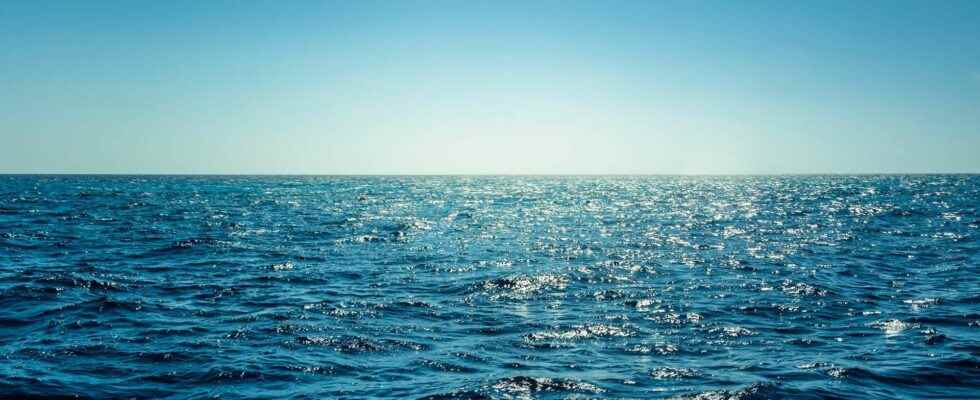On Earth, no ocean is more than 200 million years old, testifying to the great cyclicity of tectonic processes. Very regularly, some oceans close while others open up. But how does the birth of a new ocean take place?
You will also be interested
[EN VIDÉO] A billion years summarized in 40 seconds: plate tectonics Researchers have modeled the movements of tectonic plates over the past billion years.
If the movement tectonic plates can cause major continental collisions and give birth to mountain ranges like the Alps or the Himalayas, it is also intimately associated with another major phenomenon in the tectonic cycle: the opening of new oceans.
Over geological time, the Earth has in fact experienced several major tectonic cycles leading to the formation of supercontinents. During these phases where all masses continents are grouped together, the majority of the earth’s surface is occupied by a single ocean. The deep processes but also the constraints related to the continuous creation of oceanic crust and to his recycling at the level of the areas of subduction means that this configuration cannot remain fixed. After a regrouping stage, there inevitably follows a phase ofcontinental opening. These different stages are part of the Wilson cycle.
Rifting and continental rupture: the stages prior to the opening of the ocean
However, a continent that separates (totally) in two automatically gives birth to a new ocean. This is how, after the phase of continental extension, a new ocean ridge. The Mid-Atlantic Ridge, for example, was born as a result of the dislocation of the Pangea supercontinent. 180 million years ago, the South American and African plates began to separate. They will be followed by separation North American and Eurasian plates.
The thinning and breaking of the continental crust are part of the rifting process. The establishment of a new oceanic ridge will only occur at the end of this rupture process, the mechanisms of which can be varied and take more or less time, in particular depending on the speed of extension of the plates which is however never more than a few centimeters per year. The mechanism leading to the formation of a new ocean therefore extends over several tens of millions of years.
A localized rise of the asthenospheric mantle
An oceanic ridge is defined by a very localized upwelling of coat warm asthenospheric. This rise of peridotites at more than 1,300°C is accompanied by a process of partial fusion which generates magma Morb-type. By crystallizing at different depths, this magma will produce a new crust, whose composition is very different from that of the continental crust. This is the oceanic crust. We talk about the ocean when a new ridge enters into activity and produces oceanic crust.
But how does a ridge form?
It’s all about extension and isostatic balance. continental crust having a lower density than that of the mantle, it “floats” above this much denser medium. But when it thins, this variation in thickness will lead to an influx of deep material, with the aim of “compensating” for this loss of thickness. The rift zones are therefore characterized by a rise of the asthenospheric mantle under the region of greatest thinning. This is also why Alsace, which is an old unfinished rift, is marked by a strong gradient geothermal which allows in particular the exploitation of the heat of the basement.
As the continental crust gradually thins, and with it all of the continental lithosphere (which includes the upper mantle), theasthenosphere goes up and can start producing magma if the thermal conditions allow it. This is how magmatic or magma-poor continental margins are obtained, depending on the ability of the system to extract magma from the mantle at this stage.
Some ocean births take longer than others
When continental extension reaches a critical point, the continental crust, thinned to the extreme, will have no choice but to break. The story may end there in some cases, when the coat lithospheric was thinned at the same time, if not before, the continental crust. The asthenosphere is then high enough to generate significant volumes of magma. In this case, the rupture of the crust is accompanied by the establishment of a stable magmatic system and therefore the initiation of a ridge and the establishment of a new ocean, between the two continental blocks recently separated.
In other cases, we will still have to wait before seeing a real ridge begin. Indeed, if the continental lithospheric mantle is too cold (and therefore too thick), it will not break at the same time as the crust. The asthenospheric rise is then not high enough to immediately initiate an active and stable magmatism. The extension will continue to accommodate itself by exposing unmelted mantle rocks from the rest of the subcontinental mantle, until it is exhausted. In this type of configuration, the establishment of an oceanic ridge is therefore deferred and will follow the final rupture of the subcontinental mantle. The delivery is, in this case, a little longer!
Interested in what you just read?
